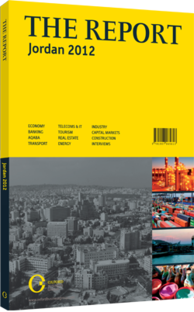OBG talks to Ziad Fariz, Governor, Central Bank of Jordan (CBJ)

Interview: Ziad Fariz
To what extent is rising inflation in the Arab world connected to the events of the “Arab Spring”?
ZIAD FARIZ: Some of the inflationary pressures we are seeing in the Middle East and North Africa (MENA) region are linked to the Arab uprisings. On the supply side, the disruption of oil production in Libya and concerns about the flow of oil through the MENA region have contributed to the recent increase in oil prices and have adversely affected oil importing countries. The disruption of trade (domestic and regional) and production in some countries has affected the supply in different markets and hence the high prices. In the case of Jordan, the disruption of the flow of natural gas from Egypt has forced local electricity producers to use more expensive fuel to generate power, and the government has raised prices for large consumers.
On the demand side, policies to appease protestors or public opinion, such as salary increases and cash transfers, will feed into domestic demand and could result in higher inflation. Price pressures across countries vary according to the extent to which subsidies and price controls are given to consumers.
What policies are in place to maintain price stability in Jordan over the coming years?
FARIZ: The CBJ continuously monitors macroeconomic developments and reviews the interest rate policy regularly, adjusting it if necessary to ensure that the interest rate structure will support price stability. For example, in February 2012 the CBJ raised the rates on its monetary policy instruments by 50 basis points so as to counter any inflationary pressures and to sustain the attractiveness of Jordanian dinar-denominated assets. The CBJ keeps a close eye on credit growth rates and changes in assets and savings denominated in the local currency, and also considers the impact of its policies on economic activity. To reduce dependence on imported energy, the government is trying to develop alternative energy sources that would help shelter the economy from imported inflation in the coming years. In addition, the government has taken several steps towards narrowing the budget deficit critical to achieving price stability and reducing vulnerabilities.
How does effective inflation targeting affect rates of economic growth and job creation?
FARIZ: Monetary stability remains the CBJ’s most fundamental objective with a stability-oriented strategy geared towards moderating inflation, maintaining exchange rate stability and global competitiveness, and harmonising interest rate structures with domestic economic developments and international money market rates. The CBJ plays a critical role in enhancing the investment environment in Jordan by maintaining monetary and banking stability, which, by reinforcing confidence in the domestic economy, are key factors in attracting domestic and foreign investment.
Would bank consolidation strengthen the sector?
FARIZ: If the banks’ business models and strategies complement each other and economies of scale and scope exist, consolidation could strengthen the sector. Such mergers will create more sophisticated and efficient banks able to compete internationally. The CBJ encourages consolidation as long as it does not reduce the banking system’s competitiveness.
How prepared are Jordanian banks to meet the new Basel III capital reserve requirements?
FARIZ: The new Basel III requirements do not represent a major challenge for the banking system in Jordan since the quality and quantity of capital is high. The average capital adequacy ratio of the Jordanian banking sector reached 19.6% at end-2011. In addition, banks have a comfortable level of liquidity. In October 2011, in order to assess Jordanian banks’ readiness to meet the new Basel III requirements, the CBJ issued request for banks to conduct a study on the impact of Basel III requirements on their financial positions. Banks are expected to provide their findings by June 2012.
You have reached the limit of premium articles you can view for free.
Choose from the options below to purchase print or digital editions of our Reports. You can also purchase a website subscription giving you unlimited access to all of our Reports online for 12 months.
If you have already purchased this Report or have a website subscription, please login to continue.

